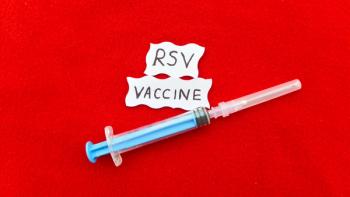High-dose prophylactic eicosatetraenoic acid (EPA) and docosahexaenoic acid (DHA) supplementation may be suited as a first-choice treatment for migraine prophylaxis, which showed the highest efficacy and highest acceptability in a network meta-analysis. The results were published in Advances in Nutrition, providing evidence of the supplementation as a potential treatment.1
According to the World Health Organization, headache disorders affected approximately 40% of the population, or approximately 3.1 billion people, globally in 2021. Headache disorders are not just head pain and are found to be the third highest cause of disability-adjusted life years worldwide, following stroke and dementia. Migraine can last 4 to 72 hours and is accompanied with nausea, vomiting, and/or photophobia and phonophobia.2
“Shared decision making should be one of the most important things you should do when selecting a patient’s therapy,” said Melissa Rayhill, MD, FAAN, associate professor of neurology at the University of Buffalo Jacobs School of Medicine, in a session at the American Academy of Neurology 2024 Annual Meeting. “Some folks might be medication adverse, and some folks are going to be really worried about ‘how many days can I treat with an acute therapy?’ So, getting a sense of what your patients’ needs are is really important, and then hearing from them about what’s important to them, what side effects are tolerable, and what are intolerable.”3
In the network meta-analysis, investigators conducted systematic reviews of publications from inception to March 20, 2022, using a variety of sources including PubMed, Embase, and ScienceDirect. In the second stage, investigators did an additional search to identify randomized controlled studies that included topiramate, valproate, propranolol, timolol, amitriptyline, venlafaxine, lisinopril, frovatriptan, or candesartan for migraine prevention. Studies were included if there were patients with migraine (including episodic, chronic, or nonspecific), intervention with EPA/DHA or FDA-approved or guideline-recommended medication, had a placebo control, and the outcome measured was change in migraine frequency or response rate.1
Investigators included 40 studies in the analysis, including a total of 6616 patients, with 78.9% being female at a mean age of 35 years. The mean treatment duration was 18 weeks, and the mean overall study duration was 19 weeks, according to the authors of the study.1
Overall, investigators found that EPA/DHA supplementation in high dosages, as well as valproate and topiramate, were associated with better improvements in the frequency of migraine days compared to the placebo. Furthermore, high-dose polyunsaturated fats were associated with a greater reduction in frequency of migraine days of all pharmacological interventions. However, when comparing episodic migraine and chronic migraine, only valproate was associated with improvements in migraine days. For chronic migraines, there were no treatments that were associated with significant changes in frequency of chronic migraine days.1
Key Takeaways
1. High-dose supplementation of omega-3 fatty acids, particularly EPA and DHA, shows promise as a first-line treatment for migraine prophylaxis based on a network meta-analysis.
2. High-dose EPA/DHA demonstrated both high efficacy in reducing migraine frequency and high acceptability for patients compared to other medications.
3. While these findings are promising, more research is needed to confirm the long-term effects and optimal dosages of high-dose EPA/DHA for migraine prevention.
Furthermore, when excluding trials that had high risk of bias, the results remained unchanged, according to the investigators. Investigators also found that venlafaxine, tonabersat, amitriptyline, and topiramate plus propranolol, and topiramate were associated with higher frequency of any adverse events during pharmacological intervention, according to the results.1
REFERENCES
1. Tseng PT, Zeng BY, Chen JJ, et al. High Dosage Omega-3 Fatty Acids Outperform Existing Pharmacological Options for Migraine Prophylaxis: A Network Meta-Analysis. Adv Nutr. 2024;15(2):100163. doi:10.1016/j.advnut.2023.100163
2. Migraine and other headache disorders. World Health Organization. March 6, 2024. Accessed July 10, 2024. https://www.who.int/news-room/fact-sheets/detail/headache-disorders
3. Gallagher A. Migraine Treatment Comes in Different Forms, Allowing for Patient Preference. Pharmacy Times. April 23, 2024. Accessed July 10, 2024. https://www.pharmacytimes.com/view/migraine-treatment-comes-in-different-forms-allowing-for-patient-preference





















































































































































































































